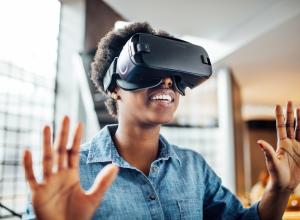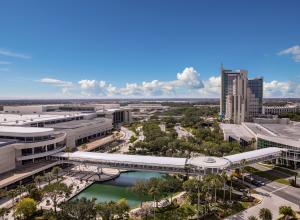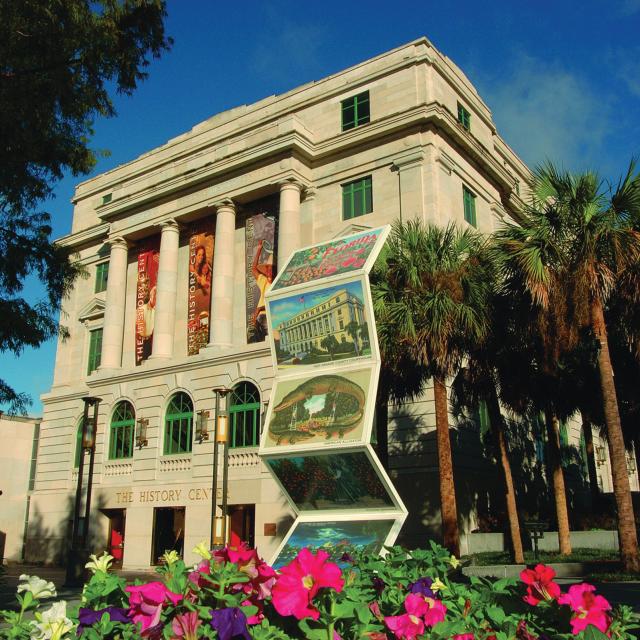Orlando History & Diversity for Business Groups
Orlando’s history started long before Walt Disney World® Resort debuted in 1971. In fact, our rich past encompasses 12,000 years and features Indigenous settlers, Spanish pioneers, cattle ranchers, citrus growers, a historic African American community, Asian and Latino immigrants, astronauts, visionaries, and all-around trailblazers. Better still, your group can delve deep into our origins and milestones at unique history centers and historical communities throughout the destination, including the options featured here!
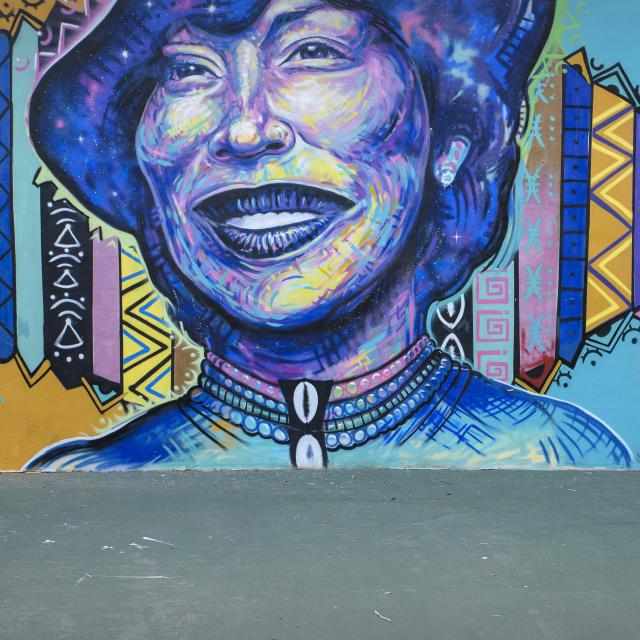
African American History in Orlando
Orlando has deep ties to the Civil Rights movement, in which Historic Eatonville played a key role. Incorporated in 1887, the town is one of the oldest African American communities in the U.S., as well as the childhood home of noted author Zora Neale Hurston (Their Eyes Were Watching God). It’s about 35 minutes north of the Orange County Convention Center.
Today, Eatonville honors Hurston’s memory with the Zora Neale Hurston National Museum of Fine Arts, aka The Hurston, which celebrates Hurston’s work and provides gallery space for artists of African descent. There’s no set admission fee, but donations are welcome. Eatonville also celebrates Hurston and its own past with the ZORA!® Festival Season, an annual series of events that kicks off with the month-long ZORA! Festival on Hurston’s birthday, January 7.

Not that Eatonville is the only place to explore African American history in Orlando. Head downtown for the Wells’Built Museum of African American History and Culture, which was originally the historic Wells’Built Hotel. Listed on the U.S. National Register of Historic Places, it hosts exhibits about the Civil Rights movement, artifacts from Orlando’s African American community, and African art and curios.
The hotel was built in 1921 by Dr. William M. Wells, a prominent African American physician who wanted to provide lodging for African Americans who were barred from Florida’s then-segregated hotels. As a result, the Wells’Built was listed in The Negro Travelers’ Green Book, an annual publication that began in the 1930s and served as the basis for 2018’s Oscar-winning film, Green Book. The hotel also attracted several notable musicians during its heyday, including Count Basie, Duke Ellington, Ray Charles and others.
Hannibal Square is part of Winter Park, a charming community about 25 minutes north of Orlando’s tourism districts and close to Eatonville. It’s also home to the Hannibal Square Heritage Center, where you can explore the district’s origins as an African American community.
Officially founded in 1881, Hannibal Square originally consisted of African Americans who worked for the South Florida Railroad and Winter Park’s wealthy families. On Oct. 12, 1887, it became the site of one of the country’s earliest Civil Rights marches, when Gus Henderson led a group of Black residents across the town’s dividing railroad tracks to vote in the election that officially incorporated Winter Park, including Hannibal Square. What’s more, two Black residents were elected aldermen, serving from 1887 to 1893.
Today, members of the community work to preserve the area’s history and landmarks. The Hannibal Square Heritage Center is an excellent place to learn more about their efforts and the district’s past.
Hispanic and Latino History in Orlando
Accounting for more than 25% of our population, Hispanic and Latino communities are a key component of Orlando’s history and culture. Their contributions are celebrated at vibrant, multifaceted festivals that traditionally take place throughout the year, including April’s Puerto Rican Festival and Parade. Held in downtown Orlando, the event culminates with an open-air celebration at the Dr. Phillips Center for the Performing Arts’ outdoor Seneff Arts Plaza.

Hispanic and Latino culture and history also take center stage at July’s Orlando Salsa Congress and October’s Festival Calle Orange. And from Sept. 15 – Oct. 15, the City of Orlando and Orange County celebrate Hispanic Heritage Month with a series of receptions, art exhibitions, the Orange County Mayor’s Cup Soccer Tournament and other special events.
For one of the region’s most extensive collections of historic Hispanic and Latino artifacts, visit the Orlando Museum of Art in Loch Haven Park near downtown. The venue’s Art of the Ancient Americas Collection includes more than 900 works from over 35 ancient cultures, including the Inca of Peru and the Aztecs of Central America. They also have the southeastern United States’ most comprehensive museum collection of Mexican Chupicuaro figurines, 160 in total.
Your group can also explore Spanish architecture at Casa Feliz in Winter Park, about 30 minutes north of the Orange County Convention Center. An Andalusian-style masonry farmhouse commissioned in 1932, Casa Feliz hosts free tours for small groups by appointment. It is also available for private events for up to 120 guests.
Asian-American History in Orlando
Orlando’s diverse Asian-American population encompasses a wide range of cultural backgrounds, with Vietnamese residents comprising the largest segment. Settling in the area during the 1970s while seeking refuge from the Vietnam War, they started families and built homes, churches and businesses, including numerous stores in the Mills 50 area, a multicultural dining and nightlife district just north of downtown Orlando.

Modern generations of our Vietnamese-American population have branched out into all areas of Central Florida’s economic, social and political life while continuing to honor their ancestors’ customs. Orlando’s annual Tet Festival celebrates the Vietnamese Lunar New Year, as well as Vietnamese-American history and positive impact, with the festivities taking place at the Central Florida Fairgrounds.
About 15 minutes west of downtown, Orlando’s Chinatown gives your group the chance to explore a robust selection of authentic Chinese restaurants and shops. The historic area is also easy to locate thanks to its traditional Chinese arch structure, aka a paifang or pailou.
Numerous residents with Filipino, Korean, Japanese, Indian and other Asian backgrounds also call Orlando home and have helped shape local culture and history. Related celebrations include winter’s Central Florida Dragon Parade Lunar New Year Festival, October’s Orlando International Dragon Boat Festival and Asian Cultural Expo, and November’s Orlando Korean Festival, among others.
Explore More History in Orlando
Orlando has still more history to explore, including downtown’s Orange County Regional History Center and Heritage Square Park. Housed inside a historic, 5-story county courthouse built in 1927, the Smithsonian Institution affiliate traces 12,000 years of Central Florida history. It is also available for meetings and receptions after hours for up to 300.
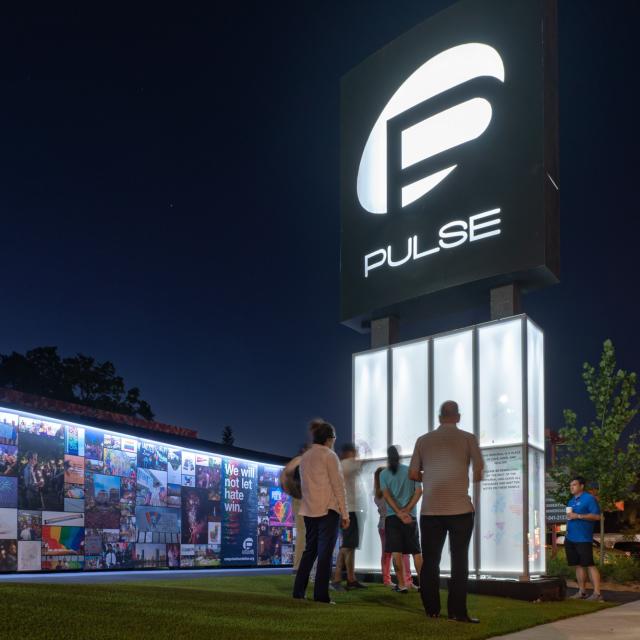
The Pulse Interim Memorial in downtown’s SoDo district doesn’t just honor the 49 lives lost on June 12, 2016: It also serves as a beacon of hope for a future where every human being can live their truth in an understanding world full of unity, acceptance and love. A larger, permanent memorial is set to join Orlando’s skyline in the coming years.
North of downtown, Art & History Museums — Maitland is listed in the National Register of Historic Places. It offers three different museums featuring unique architecture, beautiful gardens, and quality exhibitions and programs. Nearby, the Holocaust Memorial Resource and Education Center of Florida provides formal and informal opportunities for people of all ages and backgrounds to visit, reflect and grow.
Your group will find special collections and exhibits devoted to local history at several other Orlando-area museums and galleries. Discover more ways to explore our past and culture when you meet in Orlando!

